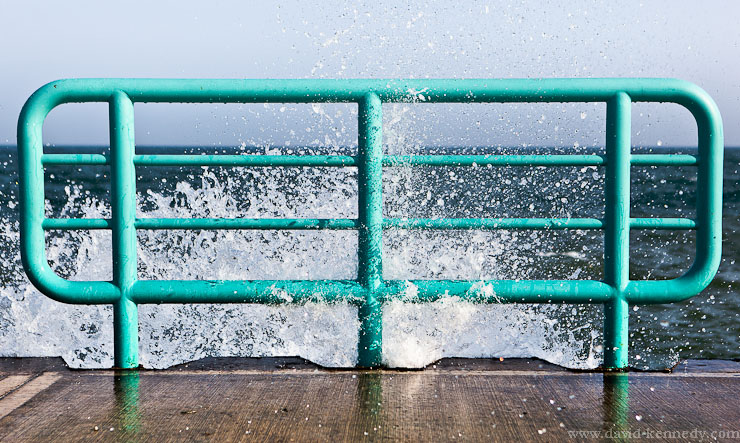
Tag: pictorial
One image, three versions

I was on my way to the boat ramp and piers by the Reefpoint Marina in Racine, Wis. yesterday when I passed by one of the city’s summer hot-spots for the past several years: the Dr. Laurel Salton Clark Memorial Fountain. The fountain was named in memory of the astronaut who was killed in the space shuttle Columbia disaster in 2003 who grew up in Racine.
Earlier this summer, the city closed the fountain to the public because its plumbing couldn’t handle the chlorination of the water any longer, and was therefore in violation of health code. The city went as far as to post a guard in front of the fountain to deter people from cooling off in it, but it was recently brought back up to code–at least in a temporary manner–in time for the summer heat.
There’s one image I liked quite a bit from this afternoon, but I cannot decide on a crop for it! Continue reading “One image, three versions”
Looking up at the Gateway to the West
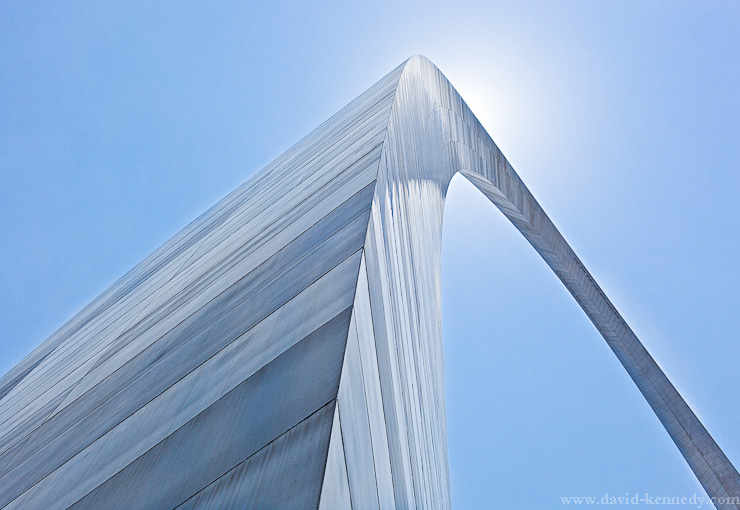
Who says you can’t make a good picture in the middle of the day?
Over the weekend Elizabeth and I found ourselves in St. Louis for Independence Day, partly thanks to a hotel deal through Hotwire.com. While I’ve been going to school at the University of Missouri for two years, and have spent some time in St. Louis in that time, I haven’t actually gone up to the Gateway Arch since a seventh-grade field trip back around 1997. Frankly, I can’t even remember if I took a camera (taking a 35mm SLR was something I was never too keen to do back when I was in middle school). But I do remember going up in the arch and feeling the structure sway back and forth in the wind. Fun! But it’s still standing there. Unfortunately, getting up to the top of the arch is harder than I can recall from all those years ago: you have to go through a magnetometer, your bag through an X-Ray, and rangers are standing by to pat you down. We actually tried two days in a row to go to the top, and both times the line for tickets was either painfully slow or, on the second day, not moving at all because the eight (eight!) employees behind the ticket counter weren’t selling tickets. C’est la vie. Continue reading “Looking up at the Gateway to the West”
On the way to the Devil’s Ice Box
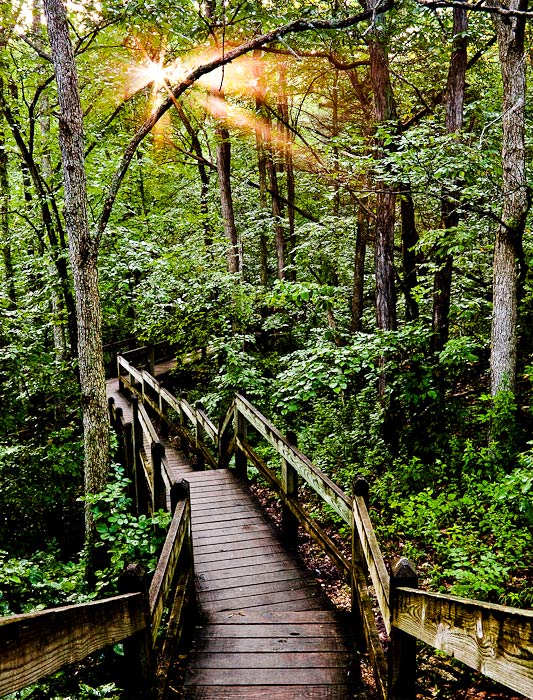
I took an excursion–albeit brief–to Rock Bridge Memorial State Park in the early evening hours tonight. A sudden thunderstorm that passed through Columbia this afternoon had left the colors saturated, and the boardwalk to the Devil’s Ice Box (an extensive cave in the park) was slippery. As I turned back to see the way I came–taking a cue from Dewitt Jones’ sappy, but helpful mantra “Look around, Dewitt”–I saw the sun bursting through the tree canopy. Normally, for a scene like this, I wouldn’t worry about stopping down beyond f/9, possibly f/11, but for maximum sunburst without risk of image deterioration due to diffraction, I chose f/16. I prefer to avoid a lens’s minimum aperture–you can test the theory yourself, and you will find that your lens becomes less sharp, not more-so, at its smallest aperture.
Lightning over Discovery Lake
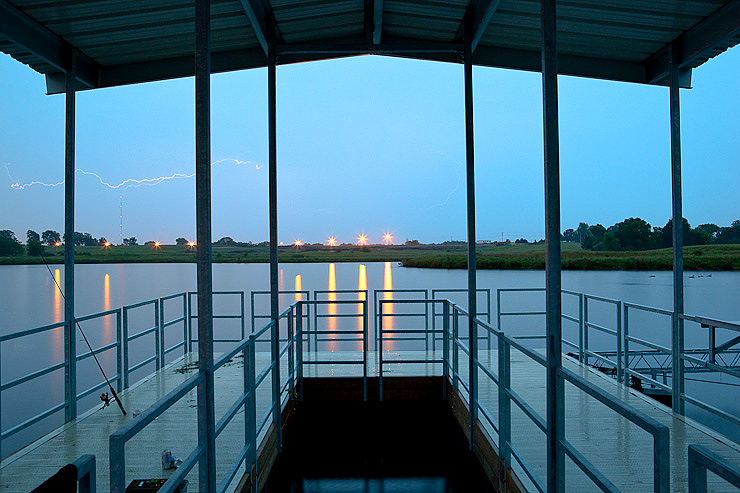
Last week, my friends Jakob, Calin, and Jamie called me up to join them on a small lake near Discovery Parkway in Columbia, Mo. to fish. Well, they fished. I fished for lightning photographs.
Unfortunately, while the picture above is tack sharp, it’s not quite satisfying. Later in the evening, I made another image that is far more pleasing–great color, great lightning strikes, including one on a cell phone tower–but is way, way out of focus when viewed at 100%. Interestingly, when sized for this blog, it’s hard to tell that it’s soft, so I’ll share it here:
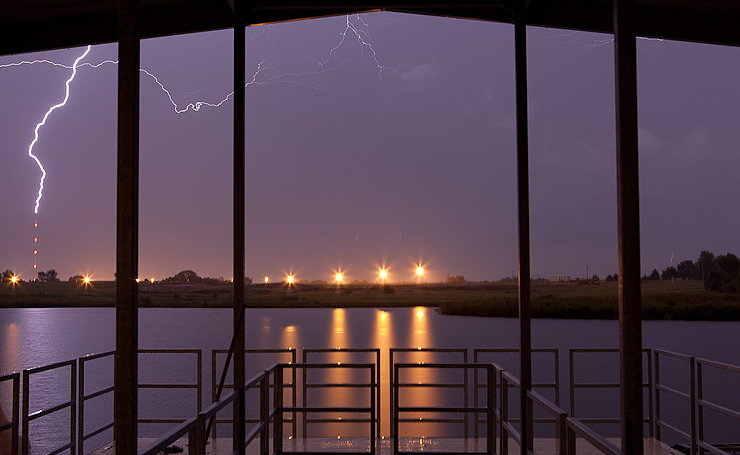
Another Chance, Same Results
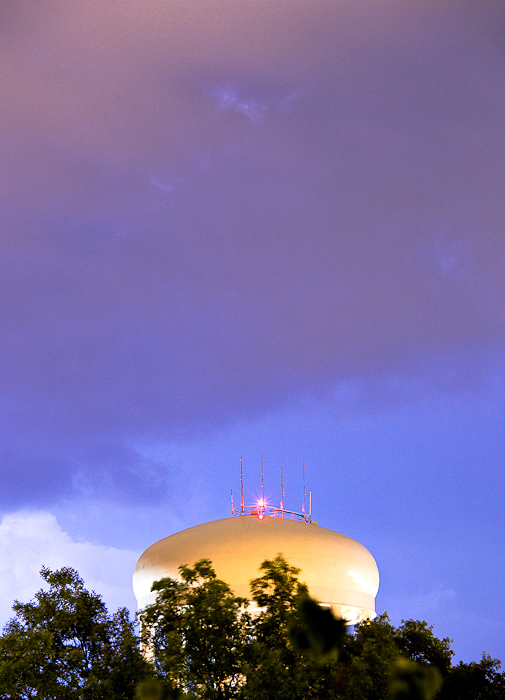
Last night a line of thunderstorms tracked through Columbia, Mo., changing the hot and humid air for the better, leaving much cooler temperatures in their wake. Before the rain came, I set up my tripod on the balcony of my apartment to try to get some lightning strikes.
Lightning was plentiful, if far away–I counted out the seconds between the light and the sound, lest I be caught outside with my own personal lightning rod–but I had little to no success at capturing a bolt across the frame.
However, I did get one image that was almost surreal: the city’s water tower encircled by the light from the lightning strikes and the clouds as they sped past overhead.
I’ve added some contrast to the image, but the colors are how the camera saw them. A fun, if a bit surreal landscape.
Next time I’ll get lightning bolts.
That said, if anyone has a suggestion for how to capture them, I’m all ears!
Last Stop: Ocracoke
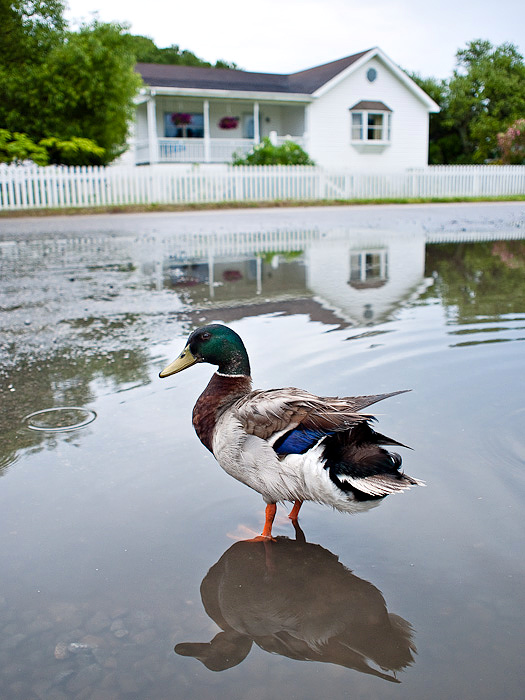
On our last morning in the Outer Banks, Elizabeth and I revisited the Ocracoke Lighthouse, which is a relatively stout structure compared to the other lighthouses in the area, and featured a light that does not rotate, but is visible from 360 degrees around it. Overnight and into the morning we were visited by some heavy thunderstorms and showers, and as we pulled into the parking lot for the lighthouse, we were greeted by three Mallards. This drake was posing for us as we made our way over to the lighthouse.
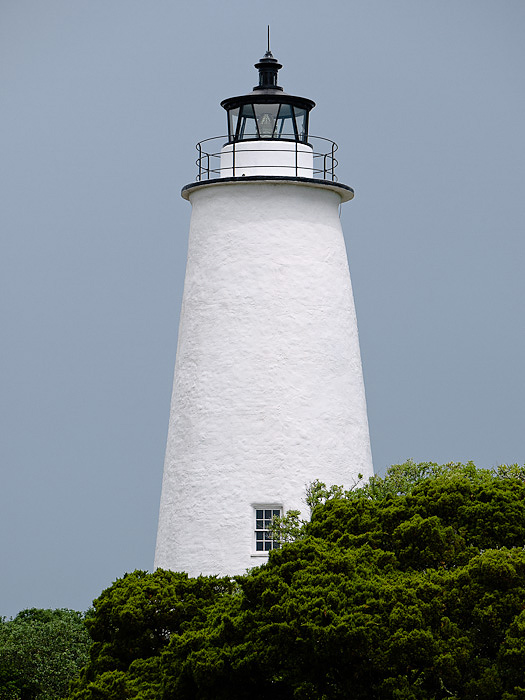
Put Down the Sandals and Pick Up the Camera
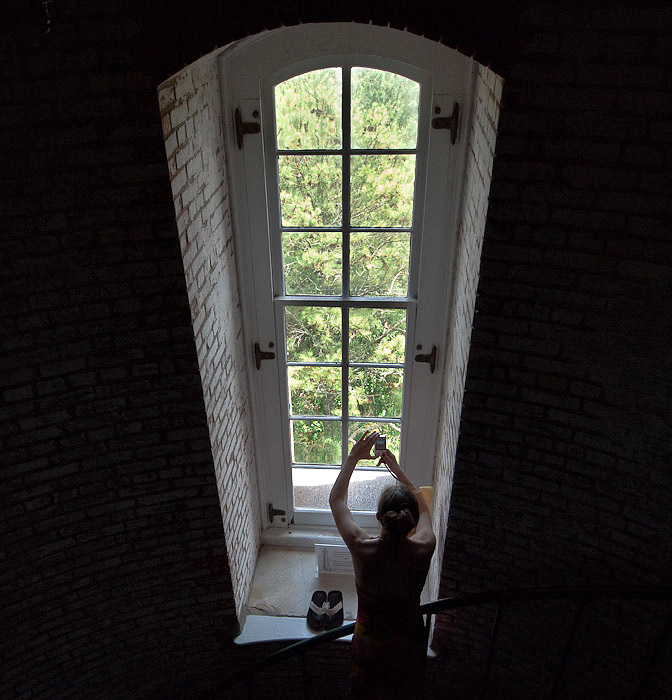
I couldn’t help but be amused when this young woman put down her sandals and got out her cell phone camera on her way down from the Currituck Lighthouse in Corolla, N.C. It’s a $7 climb to the top, but the views are great and the spiral staircase is a lot of fun to photograph.
The Outer Banks (and an update on the Oly 9-18mm)
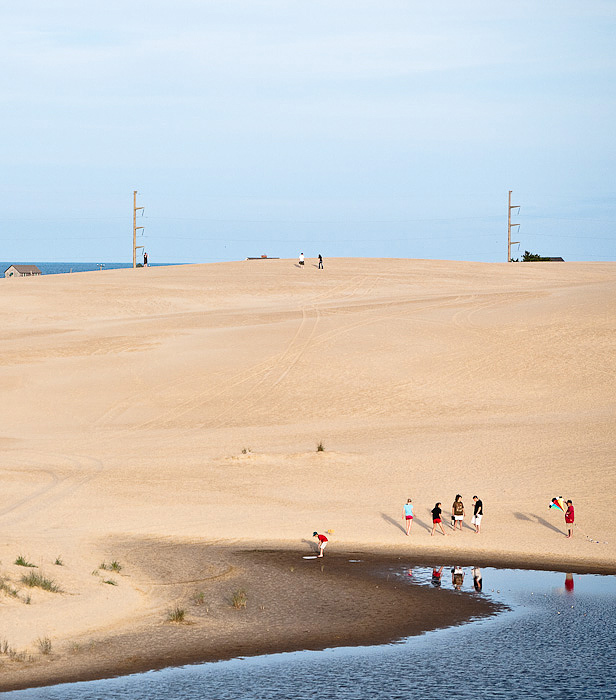
Pictorials from Vacation
Tonight, after checking in at our hotel in Manteo, N.C. on Roanoke Island, site of the “lost colony” (the first English settlement in the New World disappeared with little trace), Elizabeth and I drove over to Bodie Island. Part of the Outer Banks, Bodie Island has some pretty interesting attractions, including the site of the Wright Brothers’ first flight at Kitty Hawk, N.C., Jockey’s Ridge State Park, which is home to the largest sand dune in the eastern United States, and the Bodie Island Lighthouse, which would normally be pretty spectacular. Unless, of course, you get there when it’s wrapped in tarps and scaffolding. Damn.
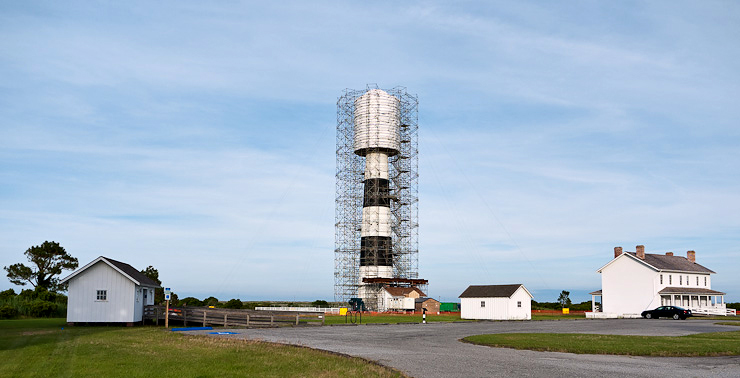
A Note about the Olympus 9-18mm
After the failure at the lighthouse, we drove back to Jockey’s Ridge State Park. It’s a haven for people flying kites as well as hang-gliding. Unfortunately, by the time we got there, the hang-gliding seemed to be over for the day. However, it gave me another opportunity to experiment with the Olympus 9-18mm f/4-5.6 lens for Micro Four-Thirds. It is a sharp and fun little lens. I’m not thrilled with the collapsing barrel design, which makes the lens inoperable when collapsed until you zoom out.
I think that I understand why Olympus has approached zoom lens design this way, because it does give Micro Four-Thirds lenses the (admittedly, false) appearance of being smaller than they really are. In essence, when not in use (collapsed), it makes a nice, tidy package with their PEN cameras. But it also makes them a bit of a pain to use.
However, shortcomings aside, it is a handy and sharp lens to have in the kit. And considerably less expensive than Panasonic’s lens, although I would like to test theirs for a comparison. (Hey, Panasonic: hint, hint!)
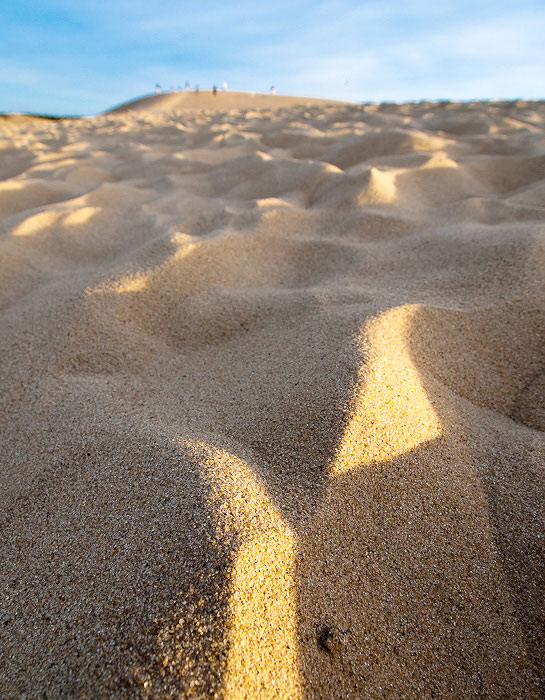
Parting Shot
To our collective amusement, Elizabeth and I discovered, on our way back from the dunes, that the boardwalk perfectly framed a row of Pepsi vending machines to greet those who did not know how else to be welcomed back to civilization from their brief connection with nature but to drown themselves in carbonated sugar water:
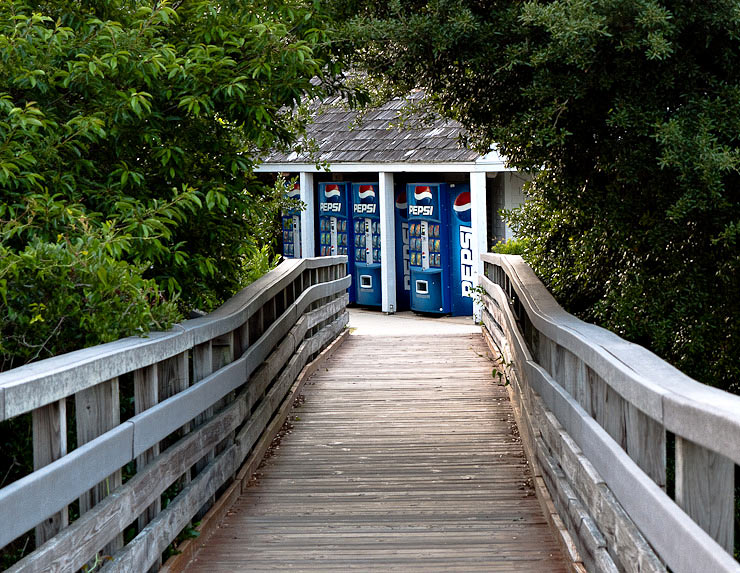
Bridge over the Flat Branch Creek
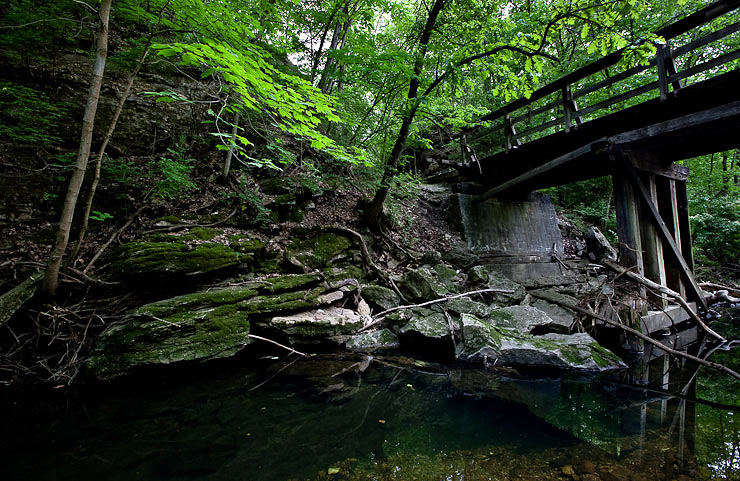
One more landscape before I post the first draft (well, what will be the “final” for my Picture Story class) of my essay on the MKT Trail on Thursday.